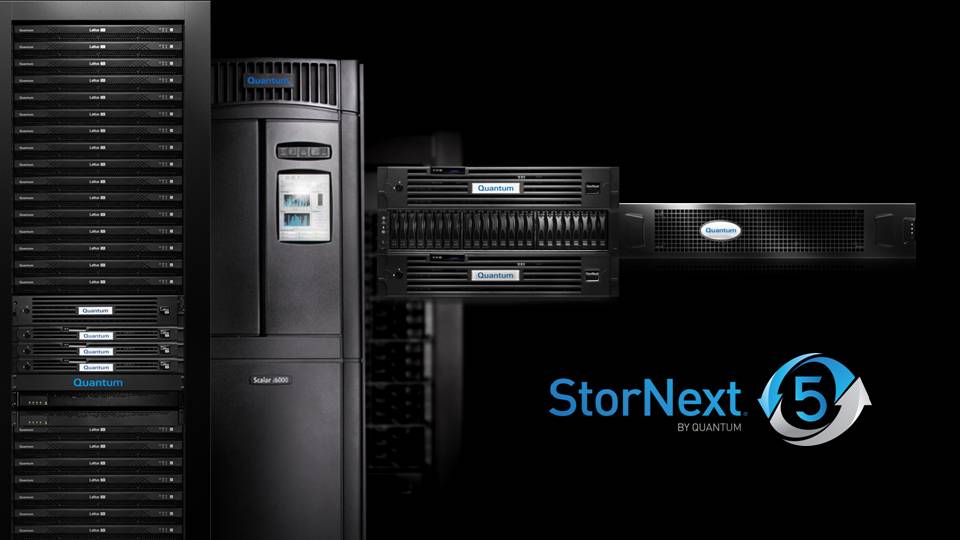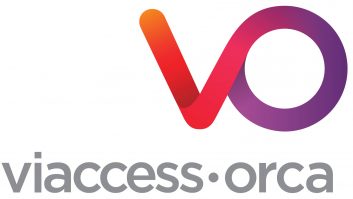
Geoff Stedman made the switch to Quantum earlier this year to take up the newly created position of senior VP, StorNext Solutions. Melanie Dayasena-Lowe met with Stedman to find out how his experience in start-ups and the storage business has helped him to steer the company’s goals.
This March, Geoff Stedman joined Quantum as senior VP, StorNext Solutions to focus on expanding the company’s leadership in scale-out storage solutions across current and new vertical markets. With a solid background in storage, having worked for the likes of Tintri, Harmonic and Omneon, Stedman is well placed to push ahead with the development and growth of Quantum’s StorNext portfolio.
“With Quantum being in the storage market, I’m able to draw a lot from my experience at Omneon, which is also storage but a different part of the storage market. Omneon focuses more on playout servers and nearline NAS storage. At Quantum it’s focused much more on production with our SAN technology and archive. I’m definitely leveraging some of that past experience,” he explains.
So how did this move come about? Stedman had been in discussions with several companies for his next role, many of which were start-ups. He was introduced to Jon Gacek, CEO of Quantum, and they began talking about his past connection with the media and entertainment business. Stedman explains: “I like marketing into vertical markets because you’re able to have much more business level workflow discussions rather than pure technology discussions. Jon was describing where the company wanted to get to with its scale-out storage products and wanting to extend into multiple verticals beginning with media and entertainment, government and other adjacent markets. He was looking for someone who could help identify those markets and lead the go-to-market efforts.”
Stedman’s experience in the start-up arena was of particular interest. “[Jon’s] also trying to create a little bit of a start-up mentality within Quantum around the scale-out storage products. It’s the key growth driver for the company. I thought I’d be able to bring a little of my start-up background and it all came together. I felt like the overall company vision was compelling and exciting. It definitely drew me in and gave me the platform I was looking to be a part of.”
Brought in to head up the StorNext portfolio, he explains that part of what attracted him to the role at Quantum was that “we were starting from a position of strength. We had a well adopted, very reliable, robust technology that adds value for customers.”
Building for the future
His appointment followed the recent introduction of StorNext 5, a re-architected, high-performance scale-out storage and archive platform optimised for customers’ changing workflow needs. “In order to keep up with where the industry was going and to handle the tremendous growth we’re seeing in data storage, particularly media storage and volumes of libraries, we’d have to go back and rebuild parts of StorNext as we need it to be even more tremendous for the next ten years,” he explains.
“We took the opportunity over the last couple of years to rebuild StorNext using newer technologies. That resulted in StorNext 5. We have this technology platform to build on for the future, and we also have a strategy to increasingly incorporate that technology into the systems we provide.”
According to Stedman, a big part of StorNext’s success has been the breadth of the application partner ecosystem that works very well with StorNext. “We’ll continue to grow that ecosystem. Part of our strategy is to build those relationships and help our independent software vendors integrate better with StorNext.”
He believes the beauty of StorNext is down to its ability to allow users to establish policies for where data resides and it presents a single view into that infrastructure regardless of where the file actually exists. “An application doesn’t need to know how to talk to a tape library, it just talks to StorNext and it will give them the data they are looking for. It’s smart enough to make sure the data is in the right place at the right time and that the application can always get to it without having to do a lot of custom integration.”
Into the cloud
So what’s next? At NAB this year, Quantum delivered a live demonstration of StorNext in the Cloud. Stedman explains: “You can imagine a world where StorNext knows how to manage data that sits in a cloud or in a cloud environment. Many cloud environments are built with storage that looks a lot like our object storage product. Over time, you will see us work with customers and partners to enable cloud-based workflows built around StorNext.”
Stedman dubbed the NAB demo as “forward looking” and “a proof of concept that you can do a full StorNext workflow in the cloud”. Content was ingested into Quantum’s StorNext 5 platform and moved to its Lattus Object Storage cloud using the Levels Beyond Reach Engine platform and Quantum’s StorNext Storage Manager. “Once it was in the cloud, we were using Adobe Anywhere to edit that material, Reach Engine to do media management and workflow management and Telestream for transcoding,” he says.
“Once you put data in the cloud, all these applications could work on the data without moving it to a local device. You can work on it in the cloud. If you can put data up in the cloud and let people work on it as they need to, StorNext can manage that. The applications already know how to talk to StorNext and it’s almost an easy migration to cloud-based workflows.”
He is excited about the prospect of the cloud going forward and the company thinks of the cloud as an active part of the workflow. “It’s a great direction for us of embracing the cloud as part of a workflow or as an enabler to the workflow. We can help customers migrate some or all of their workflow to the cloud with our technologies. I think it could be pretty transformative for customers trying to deal with needing to produce more content with more distributed workforce and do it faster.”
But are customers still concerned about security in the cloud? “We explain the object storage technology and how that stores data in a very secure fashion. The gateway and firewall security, which we don’t make, is part of any hosted environment so you can pretty quickly get over that objection,” he says.
There are two types of cloud – public and private. “In a public cloud multiple people are sharing the same infrastructure whereas in a private cloud the infrastructure is in a hosted facility dedicated to you as a customer. Everything we’re talking about is on the private cloud side. That also alleviates a lot of the security concerns. It’s dedicated infrastructure but because it’s cloud-based it’s very scalable and you can dial it up or down depending on your usage.”
4K strain
Aside from the cloud, other developments in the industry such as Ultra HD have had an impact on the storage market. “It’s going to pose challenges for customers, and it already is,” he explains. “A lot of the market is moving to 4K production. It’s because they see what is coming on the consumption and TV side. You always want to produce at the highest quality resolution you can. So that is putting significant strain on existing storage infrastructure. One of the Pro solutions we introduced at NAB was the StorNext Pro 4K, a specific StorNext configuration that supports direct 4K production. We’ve sized it and tested it. We know it works today. One of the offerings Quantum has to bring into the market right now is 4K production. That’s not the future – it’s doable today.

“We have a lot of customers using it and talking to us about how to move to 4K. A lot of customers have a StorNext environment. They may want to start a separate 4K environment, and because it is all StorNext they can bring it together sometime in the future, and that sounds appealing to customers. 4K is going to put a strain on storage in terms of more data and higher bandwidth. It needs the performance that a StorNext SAN can provide and it needs cost effective storage when you come to archive it. Those are two things that Quantum excels at.”
Workflow storage
So what makes StorNext and Quantum stand out? “We’re not a general purpose storage company when it comes to media and entertainment. We’re workflow storage. It’s storage optimised for the workflows that are used in video and media and entertainment markets. I think of Quantum as being very specialised.
“We’re using industry standard hardware, but it’s the combination of that with our software that makes StorNext so special. It is very intelligent, and allows you to accelerate workflows in ways that other general purpose storage vendors simply can’t.” Stedman likes the fact that StorNext is a product that “understands media and knows how to optimise workflows in ways you can’t get to with other products”.
Customer choice
A recent customer of StorNext is Belgium-based SONUMA (SOciété de NUMérisation et de commercialisation des Archives audiovisuelles), which chose StorNext 5 content workflow solutions to help with a large-scale digitisation and digital restoration project. As the owner of RTBF’s TV and radio archives, SONUMA’s mission is to preserve, digitise and monetise these archives, which are currently stored in a wide range of media formats including 16mm film, Beta SP and digital cassette, CD and DAT.
SONUMA will be digitising 8,000 hours of 16mm film, resulting in more than 8PB of content, and needed a high-performance, scale-out storage solution that it could easily deploy in its existing environment. Working with VP Media Solutions, a Quantum reseller, SONUMA purchased a StorNext M441 metadata appliance and StorNext QX-1200 disk storage to address this need. The DPX 2K files resulting from the digitisation process will be ingested directly into StorNext, where digital restoration and transcoding operations will be conducted and the content will be preserved.
“Our archive is a real goldmine, stretching back more than 80 years of radio and nearly 60 years of television,” said Eric Denis, IT manager, SONUMA. “To accomplish the digitisation, the ingest in 2K format and the real-time transcoding of these 8,000 hours of archive, we chose Quantum’s StorNext 5 solution because of its high performance and seamless integration into our content workflow.”
Why do customers select Quantum for their storage needs? Stedman explains: “StorNext has enabled productivity or capability that they struggled with before. Customers recognise the workflow they are trying to do is difficult. StorNext has a level of intelligence about content and the applications and there’s a certain amount of automation in terms of setting policies which translates into automated movement of data or tiering, which can save a lot of time or take out complexity.”







